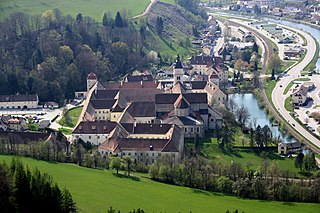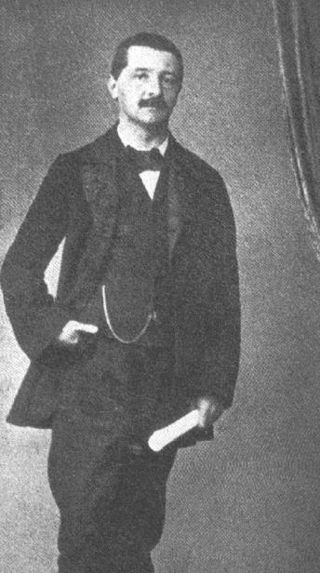
Sankt Florian is a town in the Austrian state of Upper Austria. It is 10 miles (16 km) from Linz.

Wilhering Abbey is a Cistercian monastery in Wilhering in Upper Austria, about 8 km (5 mi) from Linz. It was founded in 1146. The buildings, re-constructed in the 18th century, are known for their spectacular Rococo decoration.

Lilienfeld Abbey is a Cistercian monastery in Lilienfeld in Lower Austria, south of Sankt Pölten.

Herzogenburg Monastery is an Augustinian monastery located in Herzogenburg in Lower Austria. Founded in 1112 by Augustinian Canons, the monastery was refurbished in the Baroque style in 1714 by Jakob Prandtauer, Johann Bernhard Fischer von Erlach, and Josef Munggenast.

The Requiem in D minor, WAB 39, is a Missa pro defunctis composed by Anton Bruckner in 1849.

The Magnificat, WAB 24 is a setting of the Magnificat for SATB choir and soloists, orchestra and organ composed by Anton Bruckner in 1852.
Franz Joseph Aumann was an Austrian composer. Before his voice broke, he sang in the same Viennese choir as Michael Haydn and Johann Georg Albrechtsberger, composers with whom he later in life traded manuscripts. In view of this circulation, it is not surprising that some of his music has been incorrectly attributed to Haydn. However, his Missa Profana, satirizing the stuttering and bad singing of a schoolmaster, was once attributed to Wolfgang Amadeus Mozart.

Bruckner's Psalm 22, WAB 34, is a setting of a German version of Psalm 23, which was psalm 22 in the Vulgata.

The Mass No. 1 in D minor, WAB 26 by Anton Bruckner, is a setting of the Mass ordinary for soloists, mixed choir and orchestra, and organ.
Joseph Balthasar Hochreither was an Austrian organist and composer. He may have been a student of Heinrich Biber.

Reichersberg Abbey is a monastery of the Innviertel Congregation of the Austrian Augustinian Canons. It lies on the Inn River in Reichersberg, Upper Austria.

Ave Maria, WAB 5, is a setting of the Latin prayer Ave Maria by Anton Bruckner.

Pange lingua, WAB 31, is a sacred motet composed by Anton Bruckner in c. 1835. It is a setting of the first strophe of the Latin hymn Pange lingua for the celebration of Corpus Christi.

The Festgesang, WAB 15, is a cantata composed by Anton Bruckner in 1855.

Um Mitternacht, WAB 89, is a song composed by Anton Bruckner in 1864.

Der Lehrerstand, WAB 77, is a song composed by Anton Bruckner in c. 1847 during his stay in Sankt Florian.
Norbert Zeilberger was an Austrian organist, harpsichordist and pianist.

The Anton Bruckner Museum is a museum about the composer Anton Bruckner (1824–1896), in Ansfelden, near Linz in Upper Austria. The building is the composer's birthplace.
Augustinus Franz Kropfreiter was member of the Austrian Augustiner-Chorherren, composer and organist.






















